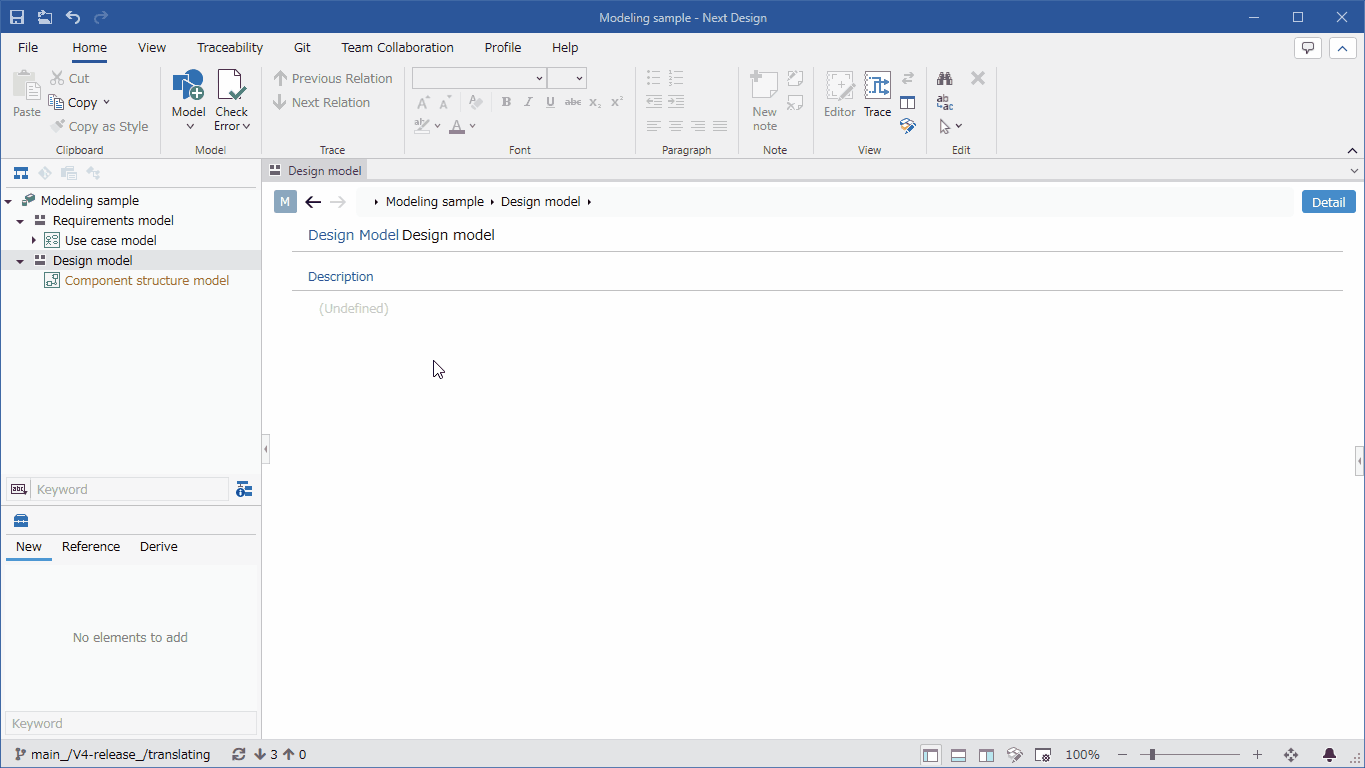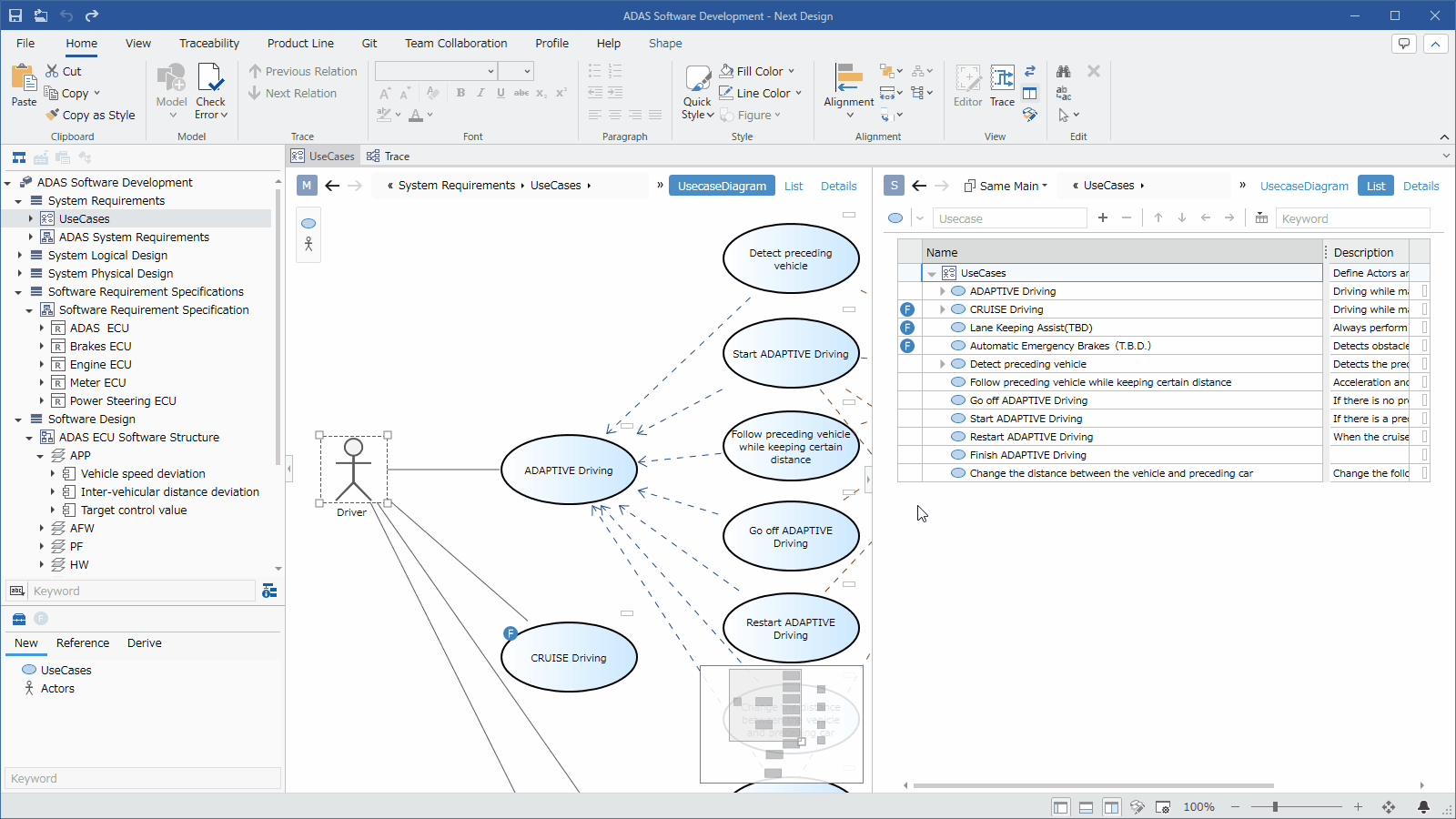Displaying a model on two screens
Overview
In Next Design, you can view and edit two related models at the same time by displaying the main editor and sub-editor side by side.
The following describes how to effectively use the two-screen display in the following order:
- Display modes and uses of the sub-editor
- Displaying the input model at the same time
- Selecting the model selected in one editor in the other editor
Display modes and uses of the sub-editor
The sub-editor has the following display modes, and the model displayed in the sub-editor is automatically switched according to the state of the main editor.
| Display Mode | Model to be displayed in the sub-editor | Purpose |
|---|---|---|
| Manual | Any model specified in the sub-editor | Fix a specific model to the sub-editor and view and edit any model in the main editor |
| Detail | Model components selected in the main editor | View and edit individual models in the sub-editor while getting an overview of the design scope in the main editor |
| Detail (Type) | Model components specified for the type of the lifeline or message selected in the sequence diagram | View the type information of the lifeline or message in the sub-editor while designing the sequence diagram in the main editor |
| Input (Deep Blue) | Model from which the model in the main editor is derived | Edit the model to be designed in the main editor and view the model that is the input for that design in the sub-editor |
| Output | Model derived from the model in the main editor | View the model of the later process that is designed with the model in the main editor as input in the sub-editor |
| Same as Main | Model edited in the main editor | Describe individual design items in a form while designing the structure in a diagram |
Display input models at the same time
As an example, when designing a "component structure model" in the main editor, follow the steps below to display the "use case model" of the previous process that serves as the input for the design in the sub editor.

- Select the "component structure model" to be designed in the model navigator and display it in the main editor.
- Click [View] > [Pane] > [Sub Editor] from the ribbon to display the sub editor.
- Select [Input (Deep Blue)] from the [Display Mode] pull-down list at the top of the sub editor, and the [Use Case Model] will be displayed in the sub editor as a model that can be input.
- If there are multiple models that can be input, select the model to display in the sub editor from the pull-down list that is added to the right of the [Display Mode] pull-down list.
- To swap the positions of the main editor and sub-editor, click [View] > [Pane] > [Swap Left and Right] from the ribbon.
- In the [Input (Deep Blue)] and [Output] view modes, the model to be displayed in the sub-editor is determined based on the derived relationship between models defined in the profile.
- If there are multiple models that correspond to [Input (Deep Blue)] or [Output], they are narrowed down as candidates and one of them is displayed in the sub-editor. If necessary, reselect the model to be displayed from the candidates.
- If no derived relationship is defined in the profile, selecting [Input (Deep Blue)] or [Output] in the view mode will not work.
Display a model selected in one editor in the other editor
To find a model you are looking at in one editor in the other editor, do the following.
By doing this, the tree grid will expand and display even if it is closed and the model is not displayed.
The model will also be selected.

- Display the same model in the main editor and subeditor.
- Select the model in the main editor or subeditor.
- Click [Show SelectedItem at SubEditor] or [Show SelectedItem at MainEditor] in the context menu.